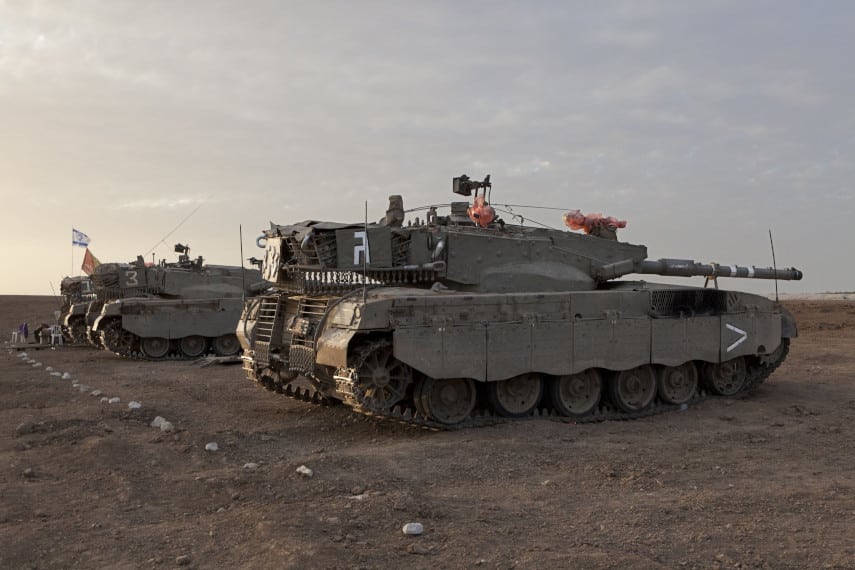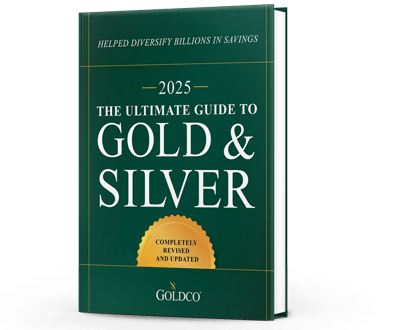Could Trump’s Tariffs Impact the Gold Price?
One of the key initiatives President Trump promised when he was elected was the implementation of tariffs on a wide variety of imports from numerous countries According to Trump, tariffs would, among...
Political

War is never a good thing. And to a society unaccustomed to major conflict, the eruption of war is understandably shocking. But in the world today, war seems to be breaking out all over, and the potential for major power conflict seems to be growing.
The invasion of Ukraine last year shocked many people, and as the conflict drags on it threatens to draw more and more countries into it. Financial and military assistance to Ukraine continues, drawing on resources from Western countries that are already on the verge of recession. The conflict remains a meat grinder, destroying lives and regions, and the outlook for a resolution looks bleak.
While the rest of the world looked to Taiwan as the next potential flash point in international affairs, Hamas told the world to hold its beer. Launching a surprise attack against southern Israel, the images of dead Israelis that have come from that conflict shocked the world’s collective conscience.
Now Israel is undertaking a war against Hamas, seeking to root out the group from Gaza, in a conflict that could very well be long-lasting and incredibly bloody. US weapons have already begun to flow to the Israeli military, and the prospect for continued escalation can’t be ruled out.
In some circles there are fears of World War III, with Ukraine, the Middle East, and China being three fronts in a potential global war. One shudders to think that such a thing could happen, but then again, no one in Europe thought the Great War would happen either.
Against that backdrop, what would happen if global conflict were to spread or intensify? And what impact would that have on your financial well-being?
While the war in Ukraine may be brutal, its impact on Americans has thus far been relatively limited. Russia had already been under sanctions for years, and the US didn’t do that much trade with Ukraine, so Americans haven’t really felt the results of that war.
The conflict in Palestine, however, could snowball into something greater that definitely impacts Americans. Older Americans remember the OPEC oil embargo that resulted from the United States’ support of Israel in the Yom Kippur War. If that were to happen again, the results could be incredibly damaging to the US economy.
Already various Arab factions in the Middle East have threatened to intervene against the US if the US intervenes on behalf of Israel. The prospect of terrorist attacks against US targets has to be taken seriously.
With relations between the US and Saudi Arabia having been strained in recent years, there’s no guarantee that OPEC won’t make further cuts to oil production, which could drive up oil and gas prices and harm Western economies that are dependent on that oil.
Even worse would be a conflict between the US and China, which would completely interrupt world trade. And with the US now involved in supporting both Ukraine and Israel, what’s to keep China from taking over Taiwan. Can the US really fight on three fronts?
These are scary times right now and there’s no telling what will happen in the next few weeks or months. Big fires start out as small ones, so even though things seem to be relatively mild and under control right now, there’s no telling when things could flare up. With news reports indicating new incursions into Israel from Lebanon, it appears that conflict in the Levant will only increase.
Immediate impacts of current conflicts could likely include higher oil prices, and the longer the conflicts continue, the worse things could get. With high inflation and a slowing economy already bringing about fears that the economy is headed into another 1970s-like stagflation, wouldn’t it be something if we endured a 1970s-style oil embargo too?
But while there would undoubtedly be negative impacts from continued war and conflict, there might be some bright spots. Among them could be prices of gold and silver, which often rise as a result of safe haven buying during times of turmoil.
If it feels like this decade is looking like a return to the 1970s, well, that’s because there are a lot of similarities. Proxy wars throughout the world, conflict in the Middle East, a monetary system on the verge of collapse, and rising inflation make it seem like it’s deja vu all over again.
The question most Americans have is, how can they protect themselves against the negative effects of recession, inflation, and war?
If we look back to history, the 1970s show us one possibility, namely gold and silver. Gold and silver were both used as monetary metals in the past, with both gold and silver prices rising above official valuations by the 1960s.
Silver coinage was replaced with base metal coinage in 1965, silver certificates remained redeemable in silver until 1968, and the “gold window” that allowed foreign governments to exchange their dollars for gold was finally closed in 1971. From that point forward, the link between the US dollar and precious metals was fully severed.
And what happened? Gold and silver both saw annualized average growth of 30% per year over the course of the decade, with 15-fold increases from 1970 to 1979.
To put that into perspective, if the Dow Jones Industrial Average were to increase 15-fold from today over the next 10 years, it would be at over 500,000 in 2033. That seems unreal, doesn’t it? Yet that’s how gold and silver performed in the face of stagflation, oil embargoes, and international unrest.
Many Americans today are fearful of what’s going to happen in the future, and so they’re taking steps to protect themselves with gold and silver. Even if gold and silver don’t repeat their amazing performance of the 1970s, many gold and silver buyers trust that gold will outperform other assets and help them keep and preserve their wealth.
There are numerous options available to buy gold and silver, from opening a gold IRA or silver IRA to protect retirement savings, to making direct cash purchases of gold and silver coins or bars. Whichever option you choose, Goldco has what you need.
With over $2 billion in precious metals placements and over 5,000 5-star reviews, Goldco prides itself on quality products and exceptional customer service. If you’re looking to buy gold and silver to help protect your hard-earned wealth, call Goldco today to learn more about the benefits of gold and silver.

